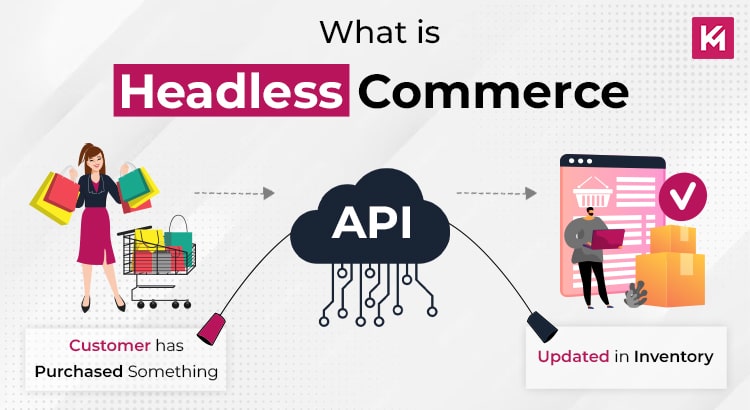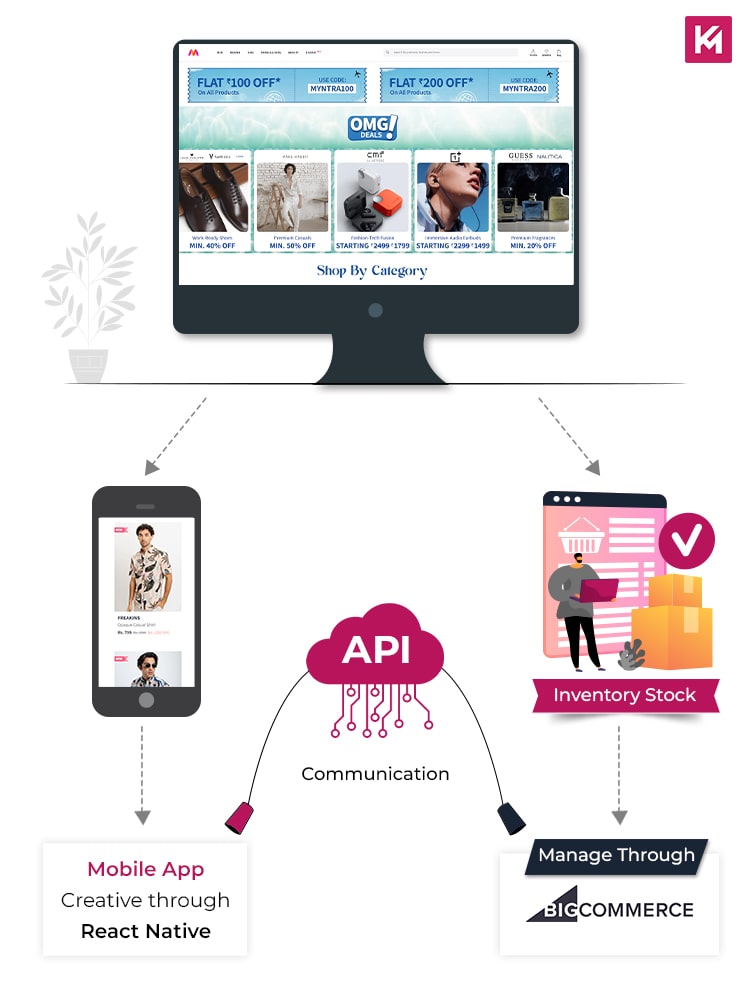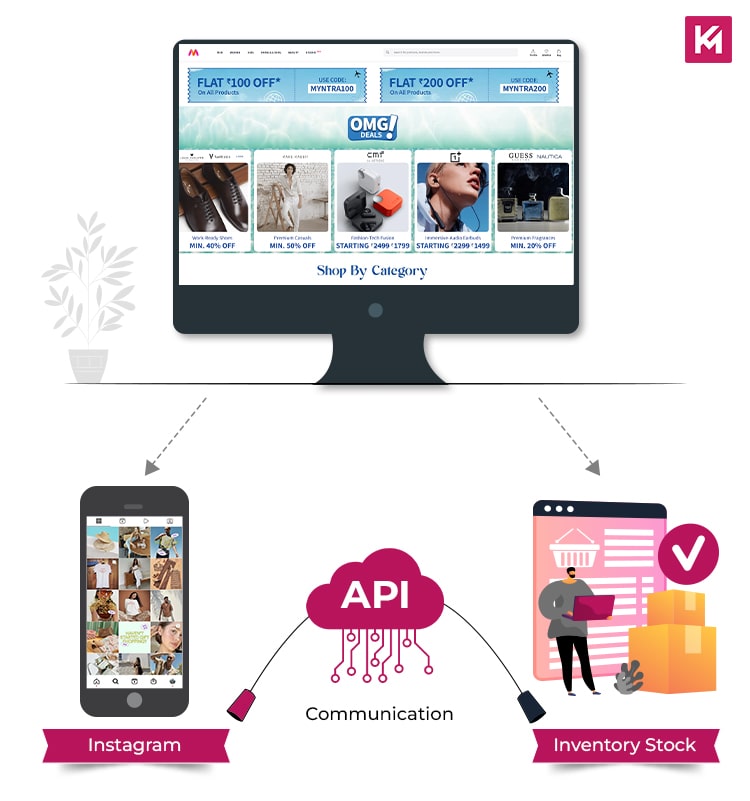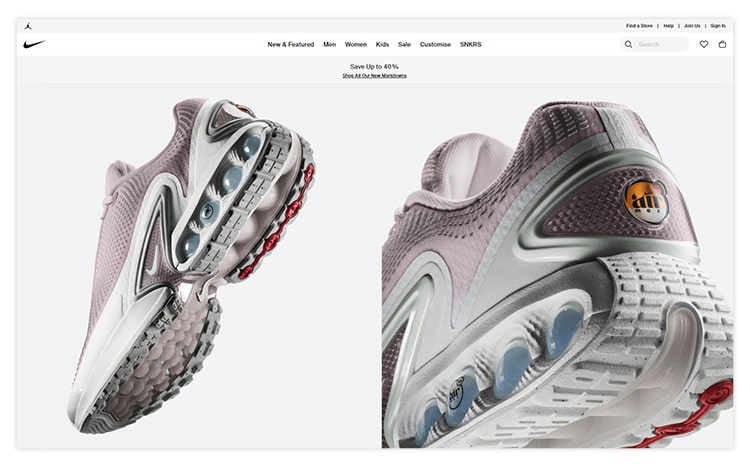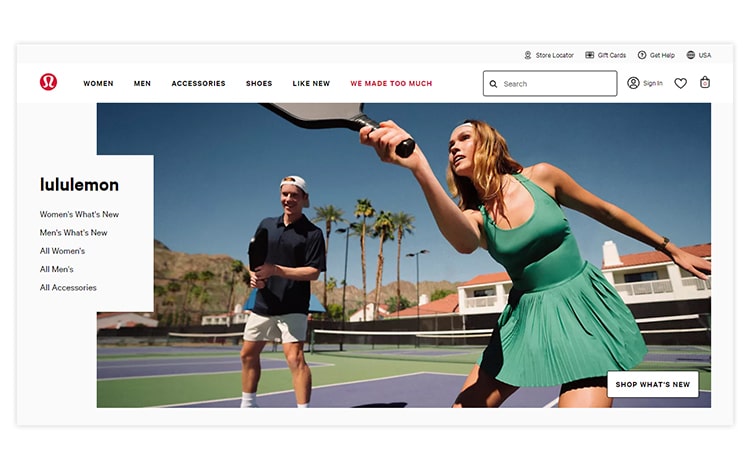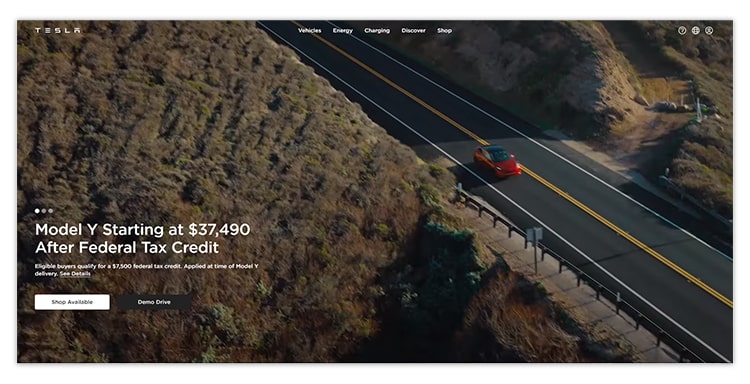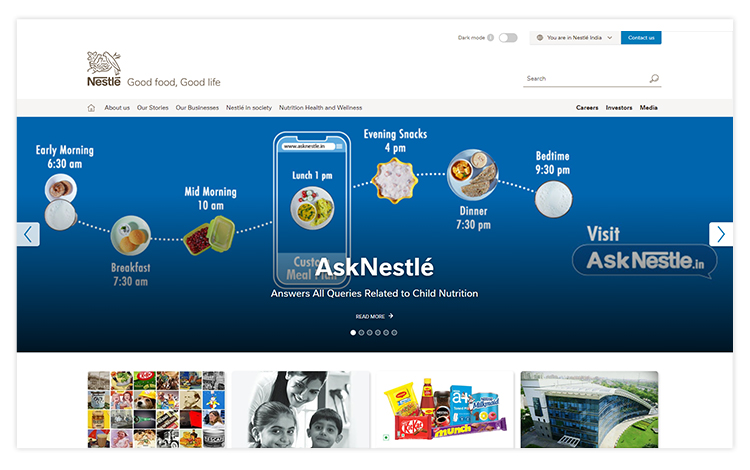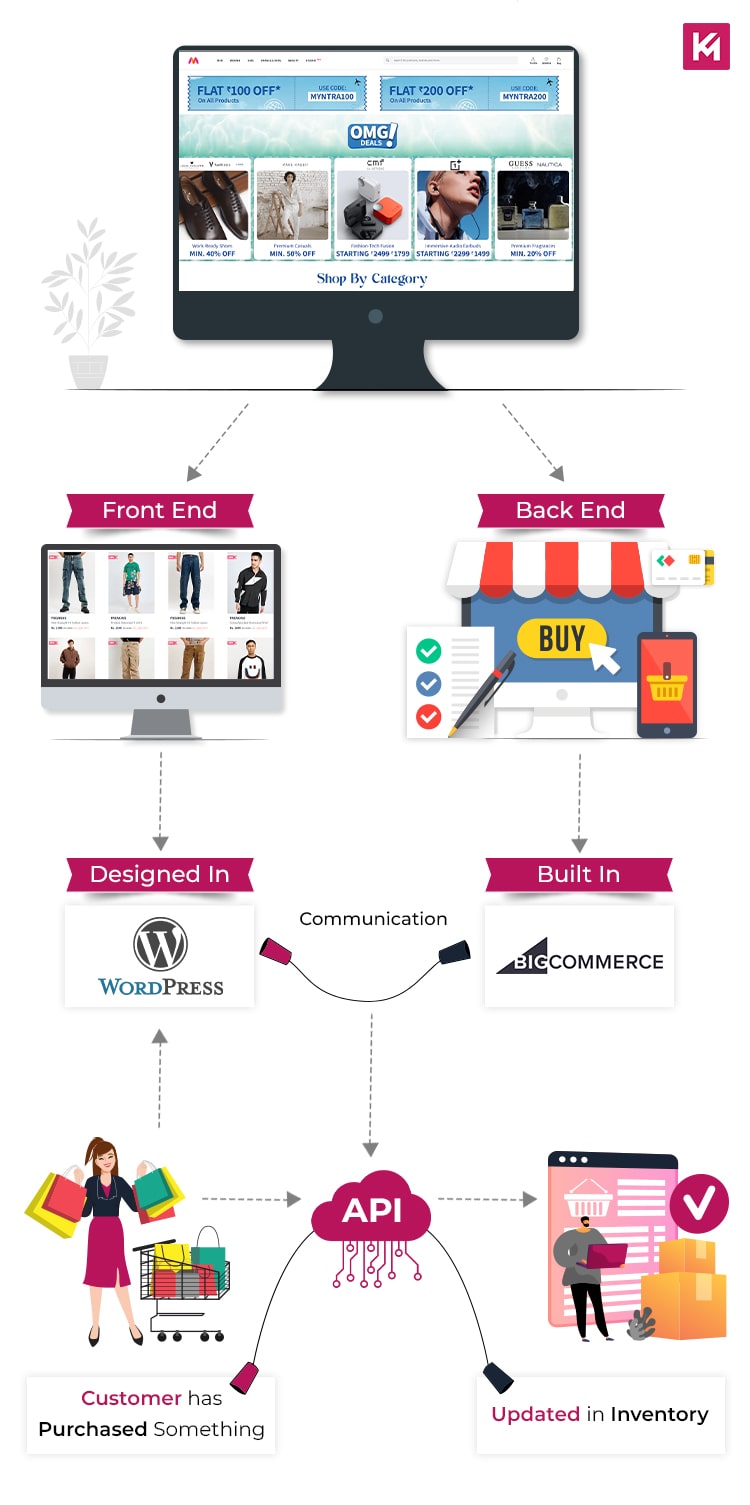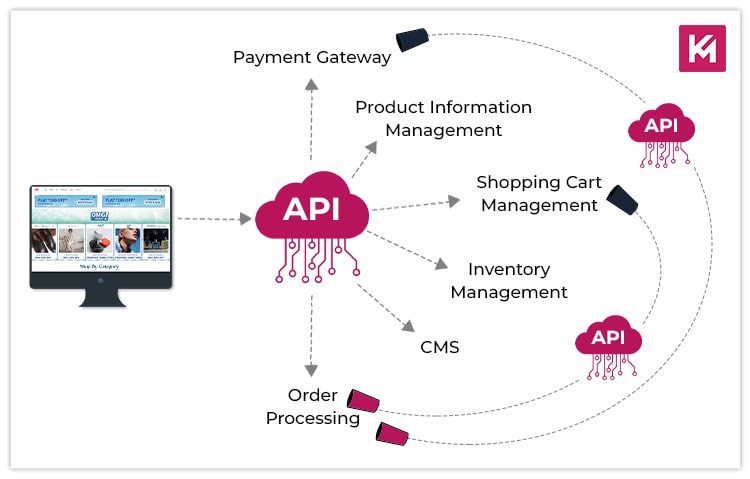Headless commerce is revolutionizing e-commerce, giving businesses the freedom to design unique shopping experiences. Unlike traditional platforms where the storefront and inventory system are one, headless commerce separates them. This allows for complete design freedom across various platforms (website, mobile app, social media) without limitations.
Statistics Back This Up:
- More recent reports suggest an even higher adoption rate, with some indicating 80% of businesses that don’t have headless CMS architecture plan to implement it in the next two years.
- The global headless commerce market was valued at USD 1.32 billion in 2020 and is projected to reach USD 13.08 billion by 2028, growing at a compound annual growth rate (CAGR) of 30.1%.
The benefits are clear: flexibility, agility, and a seamless omnichannel experience. However, it requires more technical expertise and can be more expensive to implement. So, while headless commerce offers exciting possibilities, it’s important to weigh the benefits against the complexity before diving in.
Traditional Ecommerce vs. Headless Commerce
Traditional eCommerce
Imagine a clothing store using a popular e-commerce platform like Shopify. Shopify provides both the storefront design (where you browse clothes) and the back-end functionalities (inventory management, secure payments) in one package. This is convenient but offers limited flexibility in design and customization.
Headless Commerce
Now, picture the same clothing store using headless commerce. Here’s the breakdown:
Front-End (Presentation Layer)
The store can design a unique and trendy website using a separate platform like WordPress. WordPress excels at content management and allows for a high degree of customization in terms of design and features.
Back-End (Commerce Engine)
The store can choose a robust headless commerce platform like BigCommerce. This platform handles all the critical back-end tasks like inventory management, order processing, secure payments, and customer data management.
API Communication
The magic happens through APIs (Application Programming Interfaces). These act as messengers, allowing the WordPress website (front-end) to communicate with the BigCommerce platform (back-end). Whenever a customer adds an item to their cart on the website, an API call is sent to BigCommerce to update the inventory and process the payment securely.
Additional Technical Examples
Mobile App
The same clothing store can leverage the headless approach to create a separate mobile app using a development framework like React Native. The app would also communicate with the BigCommerce platform via APIs to access product information, manage shopping carts, and facilitate checkout.
Social Commerce
Imagine integrating the store’s Instagram page with the headless system. Customers can click on a product image on Instagram and be seamlessly directed to a product page on the website for purchase.
Case Studies: Big Brands Making Headless Commerce Work
Here are a couple of real-life examples of big websites that are using headless commerce:
Nike: Streamlined Mobile Shopping:
Sephora: Omnichannel Beauty Experience:
Lululemon: Yoga Beyond the Studio:
Tesla: Electric Cars, Evolving Shopping:
Nestlé: Personalizing Coffee Moments:
Types of Headless Commerce
There are two types of Headless Commerce:
- API-driven E-commerce Platforms
- Microservices-based Systems
API-driven E-commerce Platforms
This is the most popular approach and involves separating the front-end presentation layer from the back-end commerce engine using APIs (Application Programming Interfaces). APIs act as messengers, allowing the front-end to request data and functionalities from the back-end.
Benefits
Flexibility: Businesses can design a unique front-end experience tailored to their brand and target audience using any development framework or website builder.
Scalability: The back-end commerce platform can handle complex business needs like large product catalogs, promotions, and integrations with other systems (ERP, CRM).
Drawbacks
Technical Expertise: Requires development resources or partnering with a headless commerce specialist to build and maintain the front-end and API integrations.
Potential for Integration Challenges: Ensuring smooth communication between the front-end and back-end via APIs can be complex.
Microservices-based Systems
This is a more advanced approach that breaks down the back-end commerce engine itself into smaller, independent services (microservices). Each microservice focuses on a specific task (product information, shopping cart, order processing) and communicates with other microservices and the front-end via APIs.
Benefits
High Scalability and Agility: Individual microservices can be scaled independently to meet specific needs, allowing for faster development cycles and easier integration of new features.
Improved Fault Tolerance: If one microservice experiences an issue, it doesn’t affect the entire system, enhancing overall reliability.
Drawbacks
High Complexity: Requires significant technical expertise to design, develop, and manage a microservices-based architecture. This can be expensive and time-consuming.
Increased Management Overhead: Monitoring and maintaining multiple independent services adds complexity to ongoing operations.
Benefits of Headless Commerce
1. Craft a Distinctive Online Store
Unlike “one-size-fits-all” platforms, headless commerce lets you design a website or app that perfectly reflects your brand identity. Imagine a high-end furniture store. They can ditch the generic storefront template and build a website with a sleek, sophisticated design using a platform like Adobe Experience Manager (AEM). This allows them to showcase their products in a way that aligns with their brand image, creating a more immersive shopping experience for customers.
2. Seamless Shopping Across Channels
Headless commerce ensures a consistent shopping experience no matter how customers interact with your brand. For instance, a sporting goods giant like Nike can leverage a headless system to deliver a unified experience. Customers can browse products on the Nike website, use the mobile app to check inventory at their local store, or even scan product codes in-store with the app for detailed information. All these touchpoints connect to the same back-end system, providing a smooth journey for Nike customers.
3. Faster Innovation and Experimentation
Making changes to your online store becomes a breeze with headless commerce. The front-end presentation layer (website, app) is decoupled from the back-end operations (inventory, payments). Think of a beauty retailer. They can use a headless platform to build a mobile app and experiment with new features like personalized product recommendations or virtual try-on functionality without affecting the back-end system that handles orders and payments. This allows for faster iterations and quicker adaptation to customer needs.
4. Effortless Growth and Scalability
As your business expands, your online store should too. Headless commerce provides the scalability to handle increasing traffic and product complexity. A large electronics retailer like BestBuy can leverage a headless system to manage high volumes of customers during peak seasons like Black Friday or new product launches. The back-end platform can be scaled up independently to meet the demand without impacting the website or app performance, ensuring a smooth shopping experience for all customers.
5. Connect Your Commerce Ecosystem
Headless commerce allows you to integrate your online store with other business systems for a more powerful operation. For example, a company like Sephora can connect their headless commerce platform to a customer relationship management (CRM) system. This integration allows them to personalize product recommendations and marketing campaigns based on a customer’s past purchases and browsing behavior, creating a more engaging shopping experience.
Businesses That Benefit Most from Headless Commerce
- Businesses with Unique Brand Identity
Companies that prioritize a highly customized and branded shopping experience can leverage headless commerce to create a distinct online presence.
- Businesses with Complex Product Catalogs
Companies with a large variety of products, intricate variations (size, color), or frequent product updates can benefit from the scalability and flexibility of headless commerce.
- Businesses with Omnichannel Strategies
Companies that want to provide a seamless shopping experience across multiple touchpoints (website, mobile app, social media) can leverage headless commerce for a unified brand experience.
- Fast-Growing Businesses
Businesses experiencing rapid growth or expecting significant traffic spikes can benefit from the scalability and agility of headless commerce.
Businesses with Integration Needs
Companies that require integration with other business systems like CRM, ERP, or marketing automation platforms can leverage headless commerce for a more connected ecosystem.
Headless Commerce: Is It Right for You? Weigh the Pros & Cons
Here are some key considerations for businesses evaluating headless commerce:
Challenges
- Technical Expertise
Setting up and managing a headless commerce system requires more technical knowledge compared to traditional platforms. You might need to hire developers with experience in APIs and headless commerce architecture.
- Cost
Implementing and maintaining a headless system can be more expensive than traditional platforms. The initial development costs, ongoing maintenance, and potential need for external expertise can add up.
- Complexity
Managing multiple components (front-end, back-end, APIs) requires a more complex approach compared to all-in-one solutions. Ensuring smooth communication and data flow between all parts of the system can be challenging.
Here are some additional factors to consider:
- Size and Complexity of Your Business
For smaller businesses with simpler needs, a traditional e-commerce platform might be sufficient. Headless commerce is more suitable for companies with complex product catalogs, omnichannel strategies, or a strong focus on brand differentiation.
- Existing Technical Resources
Evaluate your in-house development capabilities. If you lack the technical expertise, partnering with a headless commerce specialist can be a good option.
- Long-Term Growth Plans
If you anticipate significant growth or frequent feature updates, the scalability and flexibility of headless commerce might be a wise investment.
Conclusion
Overall, headless commerce is a powerful tool for businesses seeking a unique, flexible, and future-proof online shopping experience. Carefully weigh the benefits and challenges, considering your specific needs and resources before making a decision.

